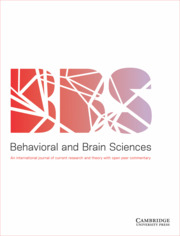Article contents
Emotional responses to music: The need to consider underlying mechanisms
Published online by Cambridge University Press: 01 October 2008
Abstract
Research indicates that people value music primarily because of the emotions it evokes. Yet, the notion of musical emotions remains controversial, and researchers have so far been unable to offer a satisfactory account of such emotions. We argue that the study of musical emotions has suffered from a neglect of underlying mechanisms. Specifically, researchers have studied musical emotions without regard to how they were evoked, or have assumed that the emotions must be based on the “default” mechanism for emotion induction, a cognitive appraisal. Here, we present a novel theoretical framework featuring six additional mechanisms through which music listening may induce emotions: (1) brain stem reflexes, (2) evaluative conditioning, (3) emotional contagion, (4) visual imagery, (5) episodic memory, and (6) musical expectancy. We propose that these mechanisms differ regarding such characteristics as their information focus, ontogenetic development, key brain regions, cultural impact, induction speed, degree of volitional influence, modularity, and dependence on musical structure. By synthesizing theory and findings from different domains, we are able to provide the first set of hypotheses that can help researchers to distinguish among the mechanisms. We show that failure to control for the underlying mechanism may lead to inconsistent or non-interpretable findings. Thus, we argue that the new framework may guide future research and help to resolve previous disagreements in the field. We conclude that music evokes emotions through mechanisms that are not unique to music, and that the study of musical emotions could benefit the emotion field as a whole by providing novel paradigms for emotion induction.
Information
- Type
- Main Articles
- Information
- Copyright
- Copyright © Cambridge University Press 2008
References
- 1048
- Cited by

